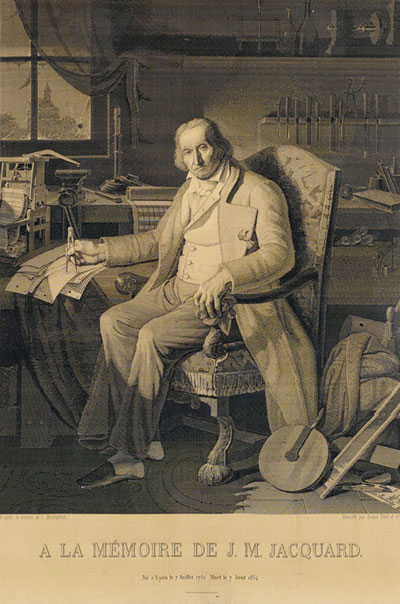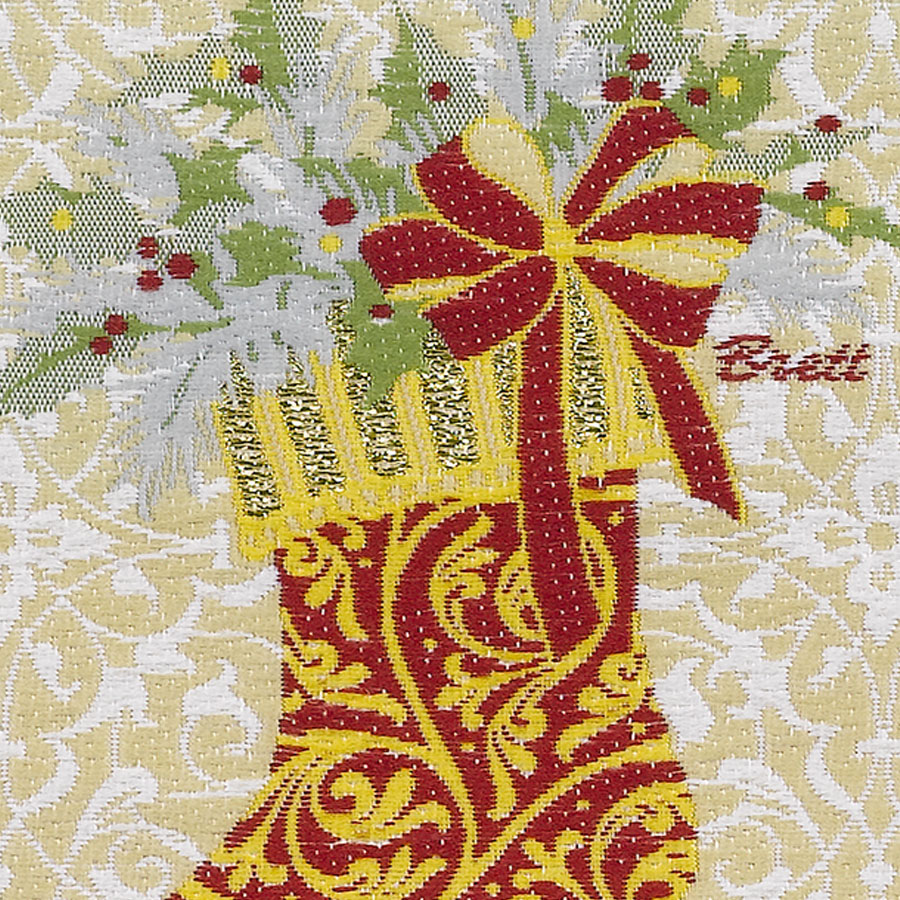Just as a peacock stands out for its colorful tail, Brett Collection cards stand out in large part thanks to their beautiful Jacquard tapestries. These tapestries have certain traits that help them make Brett Collection cards special as well as an interesting history.
Jacquard Tapestries in Brett Collection Cards
Jacquard tapestries are an integral part of Brett Collection cards; in fact, they’re literally woven into the cards. Rather than being glued to the surface of each card, the tapestries are sandwiched between two layers of material. The top layer serves as a window, letting each richly textured and multicolored tapestry shine through.
The tapestries are soft to the touch, reminiscent of a favorite quilt or sweater. Typically, the tapestry’s subject—for example, Santa or a similar holiday image—stands out against a contrasting background. The threads depicting the subject are raised, making the image slightly three-dimensional and interesting to touch.
All in all, the Jacquard tapestries set these cards apart from other options, letting each recipient know how carefully crafted the cards are.
The History

According to The Atlantic’s Sarah Laskow, the Jacquard loom weaves patterns by using a series of punch cards to essentially program and automate the operation. Thousands of punch cards can be involved in the production of a single piece of tapestry, making extremely intricate designs possible. When it was introduced, the loom’s capabilities allowed for higher-quality works with a greater degree of standardization, and it soon became widely used in the textile industry.
The Jacquard loom inspired people even beyond its intended field. For instance, the loom’s precise replication abilities had an influence on Charles Babbage and his conceptual Analytical Engine. Per Britannica’s article on the subject, Babbage planned to have the Analytical Engine use the same punch-card system that made the Jacquard loom successful. Though actually creating the Analytical Engine proved to be an insurmountable task, the conception of it represented a step away from devices that were merely calculators and a step toward true computers. Additionally, the Jacquard loom’s punch cards were replicated by Herman Hollerith, an American statistician, for data entry in his census machine. And today, you can see the Jacquard loom’s capabilities every time you hold a Brett Collection card.
